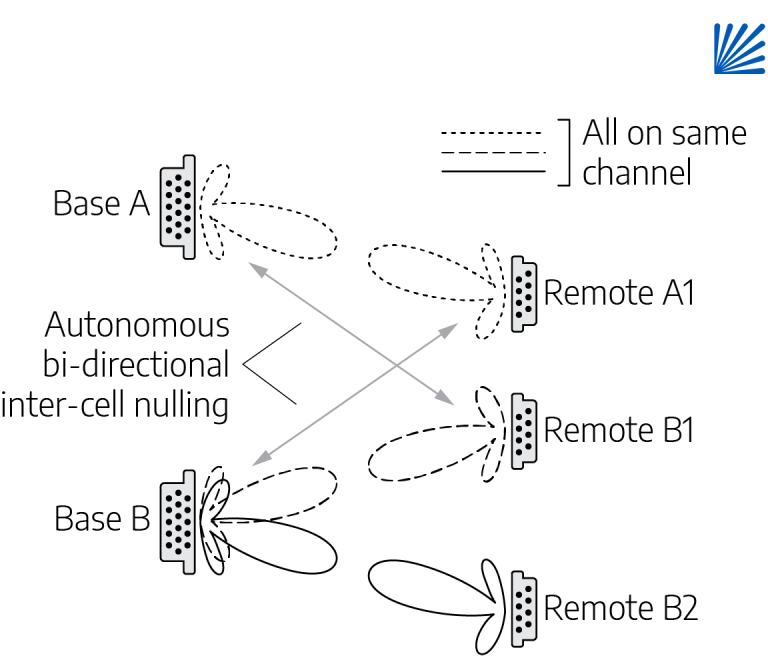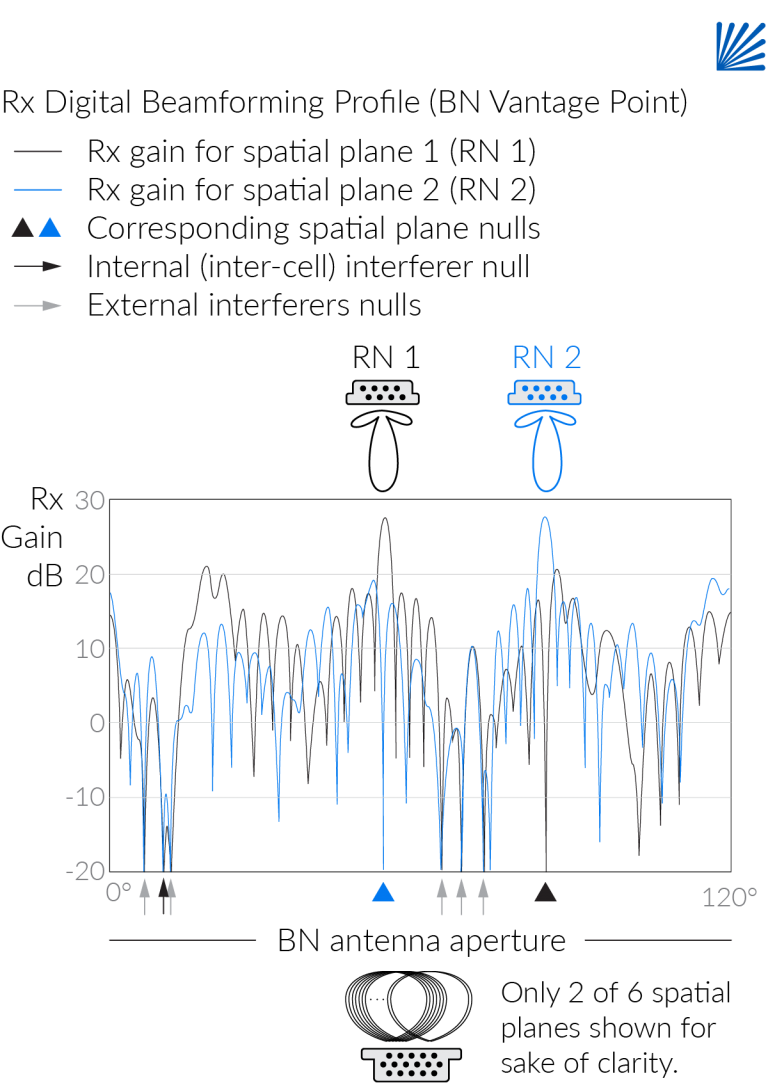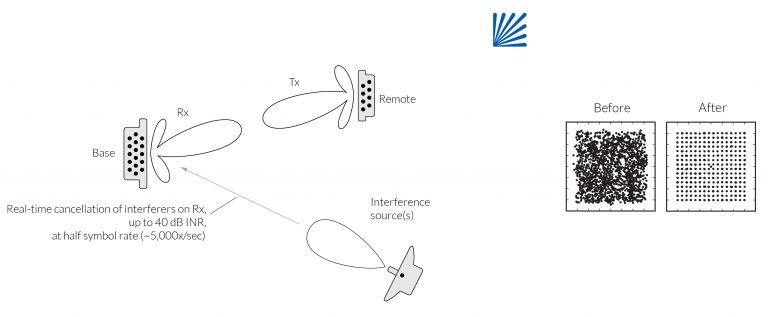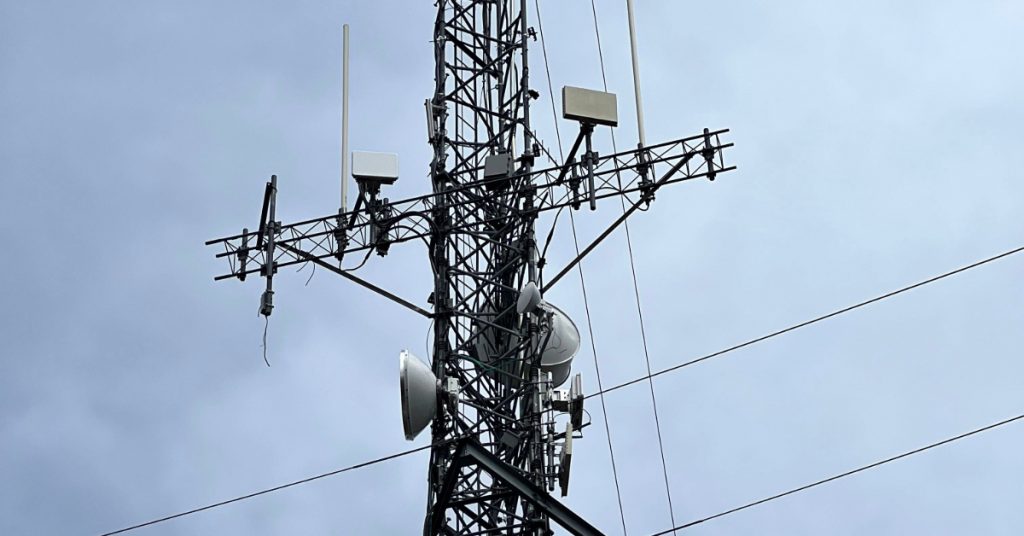This is the fifth of a series of blogs taking a closer look at what is required by next-generation fixed wireless platforms to deliver the outstanding results typical of this category. For a more comprehensive discussion of all aspects of ngFWA design, download the ngFWA Technology Primer.
Another significant aspect of ngFWA is interference cancellation. Interference, even with licensed spectrum, is an expected part of wireless communications. A well-designed ngFWA platform must significantly reduce high levels of interference that would otherwise impair link performance. In contrast, legacy FWA equipment has far fewer tools with which to address this problem, because of the many compromises it must make due to repurposed technology.
There are two types of interference that can affect service: self-interference and external, or out-of-cell, interference.
Self-Interference
Self-interference refers to an operator’s network interfering with itself. This typically occurs when multiple sectors operate on the same channel or frequency, either on the same vertical asset, a nearby vertical asset, or both. Before G1, operators would attempt to manage this interference through separate channel use in which, for example, two out of four sectors on a vertical asset (facing in opposite directions) use the same frequency and the two other sectors (facing 90 degrees from the first two) use a second frequency. This configuration is commonly referred to as k=2, where k is the number of channels used for 360º coverage.
G1 radios use a combination of the techniques described previously to create deep RF nulls in the direction of other G1 radios. Figure 1 shows an example of two base nodes on the same channel communicating with multiple remote nodes. By aligning beams more narrowly in constructive (or desired) directions and nulls in destructive (undesired) directions, on both ends of each link, self-interference in a G1 network can be reduced by up to 45 dB.


This allows G1 to employ universal frequency reuse (k=1) in which all sectors operate on the same frequency without degrading service. This is a hallmark of ngFWA and key to G1’s high performance.
Burst Interference
Burst interference originates from outside an operator’s network and can occur at any time in the 5 ms frame. It typically arises from other RF sources such as Wi-Fi radios and can’t be managed by an administrator or operator with management tools or platforms. This problem is especially prevalent in popular unlicensed spectrum (heavily used in areas where licensed spectrum is unavailable or unaffordable for the fixed broadband use case) in which accessing a clean channel can be nearly impossible.
G1’s completely unique asynchronous burst interference cancellation (ABIC) is an industry first and gives operators the ability to deliver licensed-class performance in unlicensed spectrum.

The ABIC approach processes combinations of inputs to resolve the G1 signal of interest out of a wavefront scrambled by other interfering signals. Figure 3 illustrates a signal before ABIC in which the SINR of a signal is 0 dB; that is, the interference is as strong as the desired signal. ABIC effectively cancels out all undesired signals in the channel at the receive end of the link yielding a perfect 256 QAM constellation. ABIC can remove up to 40 dB of interference from sources outside the network, operating on the received signals at both base node and remote node. As with any radio innovation, ABIC has its limits — in particular less (and even no) success at cancelling very strong interference coming from a source aimed directly at (i.e., collinear with) the boresight of the base node or remote node in question. This high-power, direct-boresight class of interference offers the ABIC algorithms insufficient diversity across Rx radio chains to extract the signal of interest successfully. Alternative mounting locations are required to address these cases.
However, in many cases, G1’s interference cancellation will serve operators well, eliminating interference where other technologies simply cannot. This feature is crucial to ensure a reliable, high-performance link that will work in unpredictable conditions both today and in the future.
If you just can’t wait to learn more, check out our other blogs or some of our favorite customer links. Or reach out to us at info@taranawireless.com. We’d love to hear from you.
